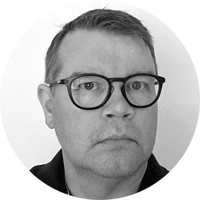
Do you know the optimal operating costs of your power plant?
Defining the optimal operating costs of a power plant can be a tough nut to crack, but if done right, there’s a lot to be gained: better profitability, reliability and availability, for instance. But if you own and operate a single power plant, how can you know what the optimal cost level is? In my opinion, even those who already have a sense of optimal cost level can benefit from clearer long-term visibility, which requires planning, patience, and open discussion.
If you provide power to the public or independently for production facilities, you likely aim to operate at an optimal cost level – everyone does. However, with the constant changes in the operating environment, it can be difficult to find out what that level truly is – and how to prepare for future changes.
In this blog, I’d like to offer my two cents on how you can find out the optimal operating cost level of your power plant and shift your focus from short-term cost optimisation to long-term gains.
With all the changes going on, what’s the best way to plan for the future?
I think most of us in the field can agree that the energy business is changing at an increasing speed. Some changes are fast-paced, such as spikes in fuel prices or availability. Others happen over a longer period but can have a lasting impact on your business. Changing energy politics and legislation, shifting dynamics in the electric market and the tech disruption will require action from all of us.
The best way, I think, to prepare for the future in the middle of all these changes, is to optimise costs for the long term. Short-term savings are simply not enough to answer the upcoming changes in the energy business and can lead to reliability and availability issues, which again can lead to costly plant outages and unsatisfied customers. It’s also important to keep in mind the scale of costs and to focus on major costs, such as fuel and possible unplanned maintenance, instead of small cost items.
Gain better visibility by monitoring the right factors
It’s crucial to have up-to-date knowledge about your current baseline so that you can tackle the changes in the operating environment effectively. A good starting point to optimise operating costs is to define your current situation. Visibility into operating costs comes largely from monitoring and measuring them, but with a multitude of values and factors to consider, it can be tough to determine what to measure and how to combine different values, and analyse the results to decide on what actions to take.
I have seen cases where only a few values are measured. As a result, a complete view of the operating costs is obviously lacking. Some are still using the same methods and values they have been using since the beginning of plant operations some 20-odd years ago while others measure only a part of the cost sources. For instance, if you only measure maintenance costs and don’t compare it with other operating costs, as well as take into account possible losses due to unscheduled maintenance, you won’t get a complete picture.
To get the full story, you need to measure and compare different costs as well as consider your operating conditions and the current market situation. Once you have a sense of your baseline and a clear picture of your current operating costs, you can set targets for optimising them.

Aim for open discussion about cost, investments, and risks
Open discussions on the current operating costs of your plant is crucial to ensure that both business targets and maintenance needs can be met. This combined with the visibility of the future of your business, you can begin to define suitable items for optimisation.
In my opinion, in cost optimisation as in life, the greatest results often require the greatest effort — and take more time. Optimising costs often require investments and enough time for those investments to bear fruit. Therefore, it’s critical to change perspective from short term to long term when it comes to evaluating operating costs. Resist the temptation to take the easiest route.
Upgrading a plant is often a good example of this. Even though it’s a more significant investment in the short term, an upgrade of your plant can bring considerable financial benefits in the long run. Discussions about costs and investments help to define acceptable payback times for investments.
Through years of experience working with clients operating in different business segments and with different engine types and plants, we can offer a look into changing operation environments and trends few can achieve on their own.
Our specialists can help build a better picture of costs and optimisation
In my experience, most power plant managers have a good understanding of how their budget is spent: what their operating costs consist of and what affects them – you probably do too. What our specialists can help you with is making sure that your baseline is up to date and that you have a long-term perspective into changes in your operating environment as well as the effects of these changes on your cost structure.
We can help you gain visibility into the future by helping you optimise not just a single cost item, but what matters most – the combination. Our customers’ installations are located all over the world, which gives us insight into global trends. Through years of experience working with clients operating in different business segments and with different engine types and plants, we can offer a look into changing operation environments and trends few can achieve on their own. Thanks to our knowledge of engines, we can simulate the optimal cost level for your installation. This way, not only will you clarify the idea of the true optimal operating costs of your power plant but you can also anticipate long-term changes and potential benefits and most take action .
I started this blog text by asking do you know the optimal operating costs of your power plant? The power plant perhaps started its commercial operation some 10 to 15 years ago, and it can well be that your operating costs were perfectly fine back in those days, but are not necessary anymore optimum in today’s or tomorrow’s operating environment. We do continuously new development to increase plant reliability and efficiency and for sure a lot has happened in the last 15 years - all that can be applied also for existing installations to boost your competitiveness and to meet future requirements.

Writer Pasi Hautakoski, Director at Wärtsilä Energy Business, has extensive experience in the energy business as well as working with our clients from all over the globe.
